This article was co-authored by wikiHow Staff. Our trained team of editors and researchers validate articles for accuracy and comprehensiveness. wikiHow's Content Management Team carefully monitors the work from our editorial staff to ensure that each article is backed by trusted research and meets our high quality standards.
There are 11 references cited in this article, which can be found at the bottom of the page.
This article has been viewed 468,164 times.
Learn more...
Mathematical proofs can be difficult, but can be conquered with the proper background knowledge of both mathematics and the format of a proof. Unfortunately, there is no quick and easy way to learn how to construct a proof. You must have a basic foundation in the subject to come up with the proper theorems and definitions to logically devise your proof. By reading example proofs and practicing on your own, you will be able to cultivate the skill of writing a mathematical proof.
Steps
Understanding the Problem
-
1Identify the question. You must first determine exactly what it is you are trying to prove. This question will also serve as the final statement in the proof. In this step, you also want to define the assumptions that you will be working under. Identifying the question and the necessary assumptions gives you a starting point to understanding the problem and working the proof.[1]
-
2Draw diagrams. When trying to understand the inner working of a math problem, sometimes the easiest way is to draw a diagram of what is happening. Diagrams are particularly important in geometry proofs, as they help you visualize what you are actually trying to prove.[2]
- Use the information given in the problem to sketch a drawing of the proof. Label the knowns and unknowns.
- As you work through the proof, draw in necessary information that provides evidence for the proof.
Advertisement -
3Study proofs of related theorems. Proofs are difficult to learn to write, but one excellent way to learn proofs is to study related theorems and how those were proved.[3]
- Realize that a proof is just a good argument with every step justified. You can find many proofs to study online or in a textbook.[4]
-
4Ask questions. It’s perfectly okay to get stuck on a proof. Ask your teacher or fellow classmates if you have questions. They might have similar questions and you can work through the problems together. It’s better to ask and get clarification than to stumble blindly through the proof.
- Meet with your teacher out of class for extra instruction.
Formatting a Proof
-
1Define mathematical proofs. A mathematical proof is a series of logical statements supported by theorems and definitions that prove the truth of another mathematical statement.[5] Proofs are the only way to know that a statement is mathematically valid.
- Being able to write a mathematical proof indicates a fundamental understanding of the problem itself and all of the concepts used in the problem.
- Proofs also force you to look at mathematics in a new and exciting way. Just by trying to prove something you gain knowledge and understanding even if your proof ultimately doesn’t work.
-
2Know your audience. Before writing a proof, you need to think about the audience that you’re writing for and what information they already know. If you are writing a proof for publication, you will write it differently than writing a proof for your high school math class.[6]
- Knowing your audience allows you to write the proof in a way that they will understand given the amount of background knowledge that they have.
-
3Identify the type of proof you are writing. There are a few different types of proofs and the one you choose depends on your audience and the assignment. If you’re unsure which version to use, ask your teacher for guidance. In high school, you may be expected to write your proof in a specific format such as a formal two-column proof.[7]
- A two-column proof is a setup that puts givens and statements in one column and the supporting evidence next to it in a second column. They are very commonly used in geometry.
- An informal paragraph proof uses grammatically correct statements and fewer symbols. At higher levels, you should always use an informal proof.
-
4Write the two-column proof as an outline. The two-column proof is an easy way to organize your thoughts and think through the problem. Draw a line down the middle of the page and write all givens and statements on the left side. Write the corresponding definitions/theorems on the right side, next to the givens they support.[8]
- For example:
- Angle A and angle B form a linear pair. Given.
- Angle ABC is straight. Definition of a straight angle.
- Angle ABC measures 180°. Definition of a line.
- Angle A + Angle B = Angle ABC. Angle addition postulate.
- Angle A + Angle B = 180°. Substitution.
- Angle A supplementary to Angle B. Definition of supplementary angles.
- Q.E.D.
-
5Convert the two-column proof to an informal written proof. Using the two-column proof as a foundation, write the informal paragraph form of your proof without too many symbols and abbreviations.
- For example: Let angle A and angle B be linear pairs. By hypothesis, angle A and angle B are supplementary. Angle A and angle B form a straight line because they are linear pairs. A straight line is defined as having an angle measure of 180°. Given the angle addition postulate, angles A and B sum together to form line ABC. Through substitution, angles A and B sum together to 180°, therefore they are supplementary angles. Q.E.D.
Writing the Proof
-
1Learn the vocabulary of a proof. There are certain statements and phrases that you will see over and over in a mathematical proof. These are phrases that you need to be familiar with and know how to use properly when writing your own proof.[9]
- “If A, then B” statements mean that you must prove whenever A is true, B must also be true.[10]
- “A if and only if B” means that you must prove that A and B are logically equivalent. Prove both “if A, then B” and “if B, then A”.
- “A only if B” is equivalent to “if B then A”.
- When composing the proof, avoid using “I”, but use “we” instead.
-
2Write down all givens. When composing a proof, the first step is to identify and write down all of the givens. This is the best place to start because it helps you think through what is known and what information you will need to complete the proof. Read through the problem and write down each given.[11]
- For example: Prove that two angles (angle A and angle B) forming a linear pair are supplementary.
- Givens: angle A and angle B are a linear pair
- Prove: angle A is supplementary to angle B
-
3Define all variables. In addition to writing the givens, it is helpful to define all of the variables. Write the definitions at the beginning of the proof to avoid confusion for the reader. If variables are not defined, a reader can easily get lost when trying to understand your proof.
- Don’t use any variables in your proof that haven’t been defined.
- For example: Variables are the angle measure of angle A and measure of angle B.
-
4Work through the proof backwards. It’s often easiest to think through the problem backwards. Start with the conclusion, what you’re trying to prove, and think about the steps that can get you to the beginning.
- Manipulate the steps from the beginning and the end to see if you can make them look like each other. Use the givens, definitions you have learned, and proofs that are similar to the one you’re working on.
- Ask yourself questions as you move along. "Why is this so?" and "Is there any way this can be false?" are good questions for every statement or claim.
- Remember to rewrite the steps in the proper order for the final proof.
- For example: If angle A and B are supplementary, they must sum to 180°. The two angles combine together to form line ABC. You know they make a line because of the definition of a linear pairs. Because a line is 180°, you can use substitution to prove that angle A and angle B add up to 180°.
-
5Order your steps logically. Start the proof at the beginning and work towards the conclusion. Although it is helpful to think about the proof by starting with the conclusion and working backwards, when you actually write the proof, state the conclusion at the end. It needs to flow from one statement to the other, with support for each statement, so that there is no reason to doubt the validity of your proof.[12]
- Start by stating the assumptions you are working with.
- Include simple and obvious steps so a reader doesn’t have to wonder how you got from one step to another.
- Writing multiple drafts for your proofs is not uncommon. Keep rearranging until all of the steps are in the most logical order.
- For example: Start with the beginning.
- Angle A and angle B form a linear pair.
- Angle ABC is straight.
- Angle ABC measures 180°.
- Angle A + Angle B = Angle ABC.
- Angle A + Angle B = Angle 180°.
- Angle A is supplementary to Angle B.
-
6Avoid using arrows and abbreviations in the written proof. When you are sketching out the plan for your proof, you can use shorthand and symbols, but when writing the final proof, symbols such as arrows can confuse the reader. Instead, use words like “then” or “therefore”.[13]
- Exceptions to using abbreviations include, e.g. (for example) and i.e. (that is), but be sure that you are using them properly.[14]
-
7Support all statements with a theorem, law, or definition. A proof is only as good as the evidence used. You cannot make a statement without supporting it with a definition. Reference other proofs that are similar to the one you are working on for example evidence.[15]
- Try to apply your proof to a case where it should fail, and see whether it actually does. If it doesn’t fail, rework the proof so that it does.
- Many geometric proofs are written as a two-column proof, with the statement and the evidence. A formal mathematical proof for publication is written as a paragraph with proper grammar.
-
8End with a conclusion or Q.E.D. The last statement of the proof should be the concept you were trying to prove. Once you have made this statement, ending the proof with a final concluding symbol such as Q.E.D. or a filled-in square indicates that the proof is completely finished.[16]
- Q.E.D. (quod erat demonstrandum, which is Latin for "which was to be shown").
- If you're not sure if your proof is correct, just write a few sentences saying what your conclusion was and why it is significant.
Community Q&A
-
QuestionIn which method of mathematics does the proof start from the conclusion?
 DonaganTop Answerer"Mathematical induction" begins with a statement (a conclusion) and proves that it is true in one case and then that it's true in other cases.
DonaganTop Answerer"Mathematical induction" begins with a statement (a conclusion) and proves that it is true in one case and then that it's true in other cases. -
QuestionHow can I prove congruent of 2 triangles easily?
 DonaganTop AnswererThere is no especially easy way of doing it. All you can do is prove the corresponding sides equal in length and the corresponding angles of equal arc.
DonaganTop AnswererThere is no especially easy way of doing it. All you can do is prove the corresponding sides equal in length and the corresponding angles of equal arc. -
QuestionWhen I need to construct a diagram to solve a question, how do I know how?
 Community AnswerThis is very difficult in general. It's very common in math for someone to find a clever way of looking at an old problem that results in a much shorter and simpler proof of a famous theorem. Anyway, here are two vague ideas: experience (ask what sort of tricks tend to be effective on problems similar to this one) and pattern recognition (what can you do to this problem to make it look like something you've seen before and have the tools to solve?) Both of these are easier (but still not necessarily easy) if you know the background material thoroughly, so study as many theorems as you can -- not just the result, but also how they are proven.
Community AnswerThis is very difficult in general. It's very common in math for someone to find a clever way of looking at an old problem that results in a much shorter and simpler proof of a famous theorem. Anyway, here are two vague ideas: experience (ask what sort of tricks tend to be effective on problems similar to this one) and pattern recognition (what can you do to this problem to make it look like something you've seen before and have the tools to solve?) Both of these are easier (but still not necessarily easy) if you know the background material thoroughly, so study as many theorems as you can -- not just the result, but also how they are proven.
References
- ↑ https://www.hamilton.edu/documents/Writing%20Mathematical%20Proofs.pdf
- ↑ https://www.birmingham.ac.uk/Documents/college-eps/college/stem/Student-Summer-Education-Internships/Proof-and-Reasoning.pdf
- ↑ https://sites.math.washington.edu/~lee/Writing/writing-proofs.pdf
- ↑ https://www.proofwiki.org/wiki/Main_Page
- ↑ https://www2.math.uconn.edu/~hurley/math315/proofgoldberger.pdf
- ↑ https://www.math.washington.edu/~lee/Writing/writing-proofs.pdf
- ↑ https://sites.math.washington.edu/~lee/Writing/writing-proofs.pdf
- ↑ https://www.ck12.org/geometry/properties-and-proofs/lesson/Two-Column-Proofs-BSC-GEOM/
- ↑ https://math.berkeley.edu/~hutching/teach/proofs.pdf
- ↑ http://www.math.ucsd.edu/~ebender/proofs.html
- ↑ https://deopurkar.github.io/teaching/algebra1/cheng.pdf
- ↑ https://deopurkar.github.io/teaching/algebra1/cheng.pdf
- ↑ https://dept.math.lsa.umich.edu/~jchw/PrimerOnProof.pdf
- ↑ https://www.math.washington.edu/~lee/Writing/writing-proofs.pdf
- ↑ https://deopurkar.github.io/teaching/algebra1/cheng.pdf
- ↑ https://www.hamilton.edu/documents/Writing%20Mathematical%20Proofs.pdf
About This Article
To easily do a math proof, identify the question, then decide between a two-column and a paragraph proof. Use statements like "If A, then B" to prove that B is true whenever A is true. Write the givens and define your variables. Support your statement with a theorem, law, or definition, and end with a concluding symbol, like Q.E.D. For help on how to understand the question, and turn an outlined proof into a written statement, read on.
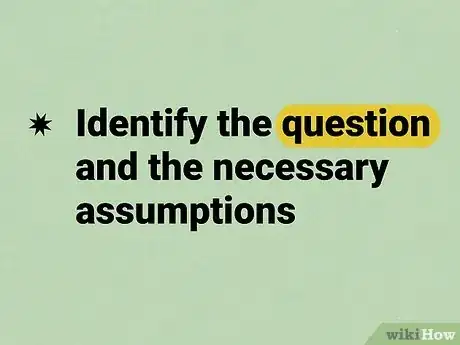
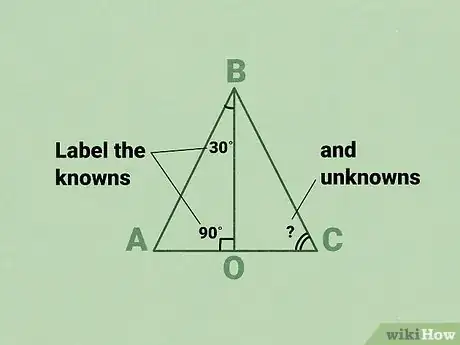
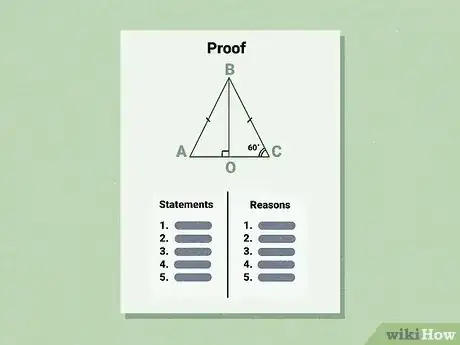

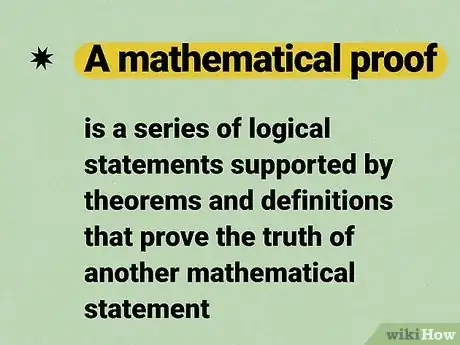
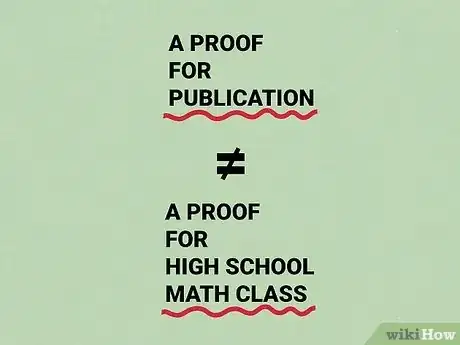
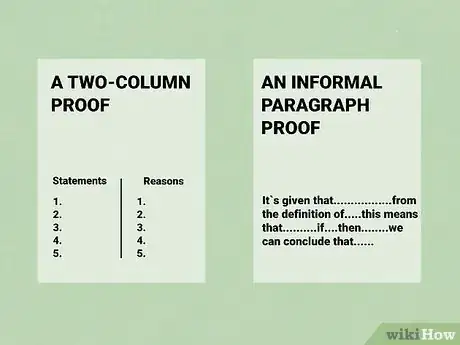
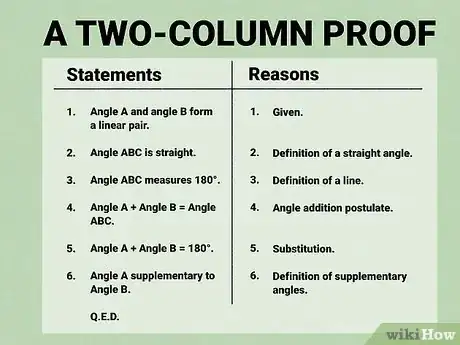
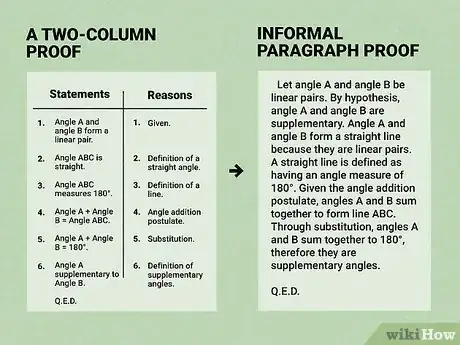
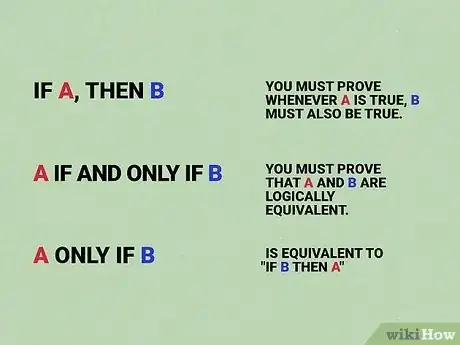
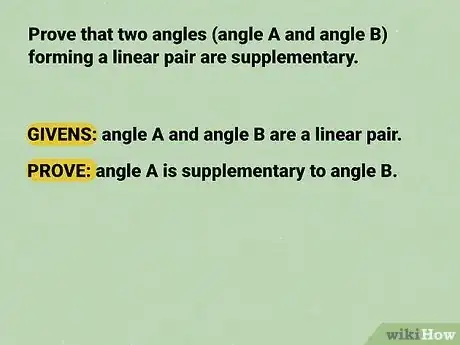
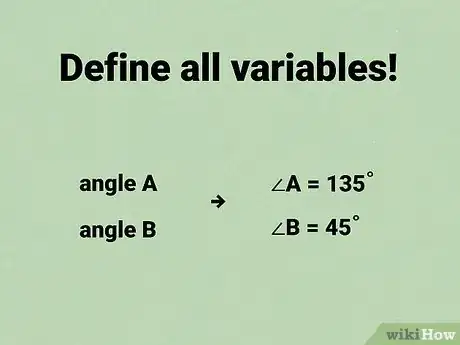
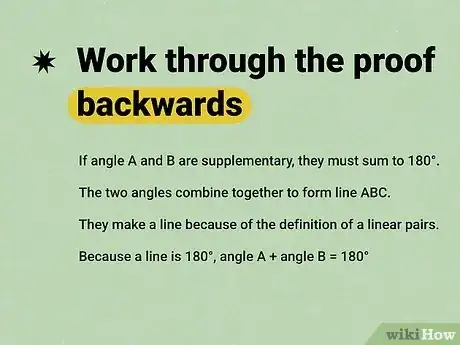
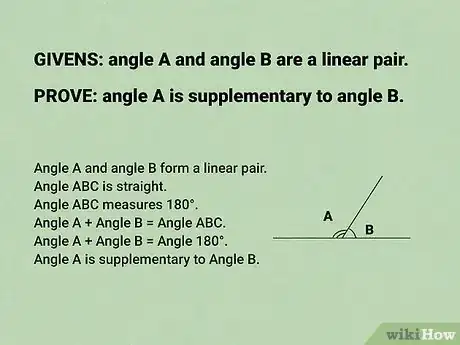
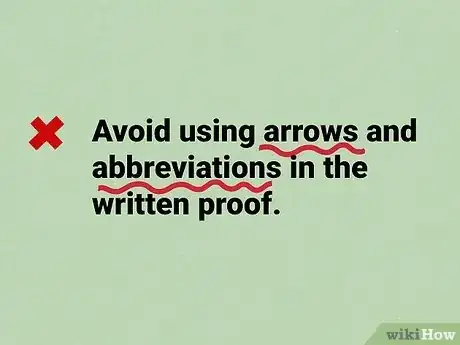
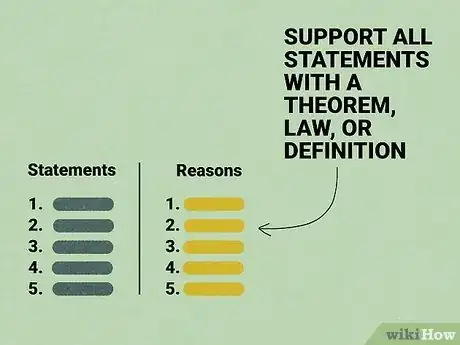
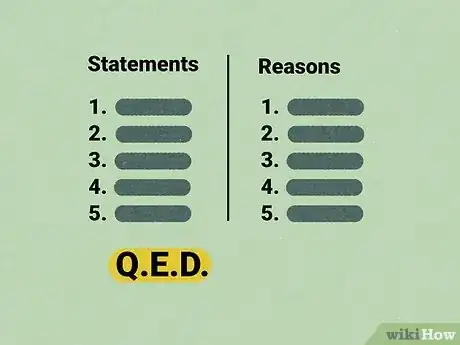
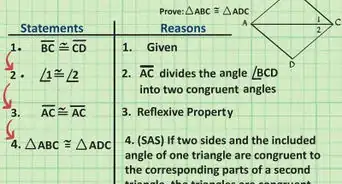
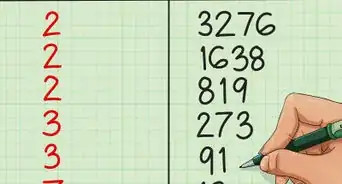
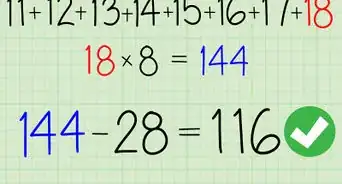
-Step-31-Version-2.webp)

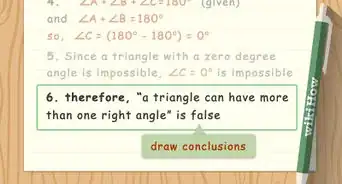
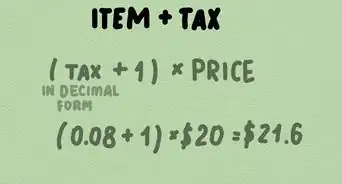
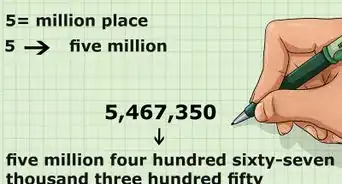
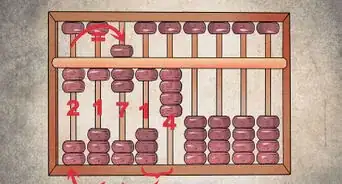
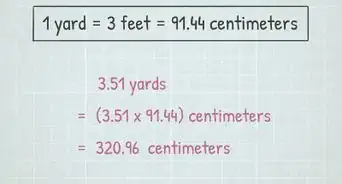
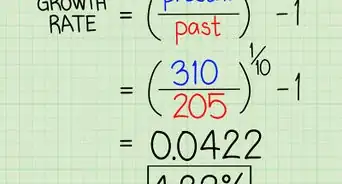
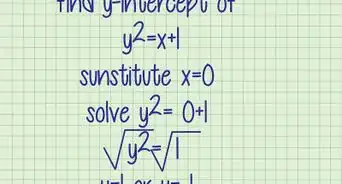
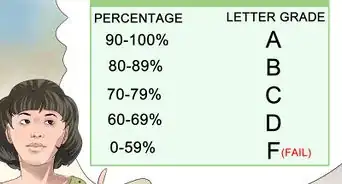
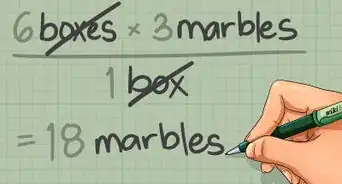







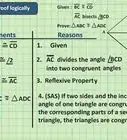
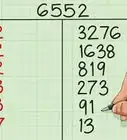
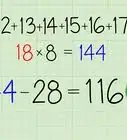
-Step-31-Version-2.webp)


































